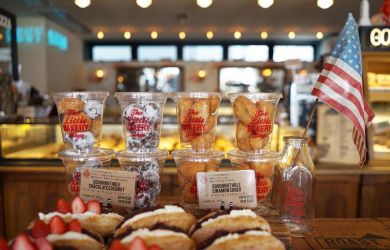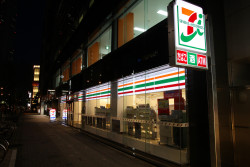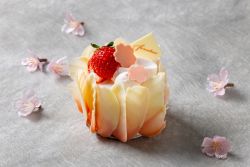
March 18, 2004
High Tea
Cha and music have long been Nagasaki's two great passions. Simon Rowe hops on a tram to sample the Kyushu city's delights.
By Metropolis
Originally published on metropolis.co.jp on March 2004

Photos by Simon Rowe
Tea runs through the veins of Nagasaki’s city folk. Be it an earthy brew of brown-roasted houji-cha or a smoldering can of milk tea, the tea break is so set in daily life, it’s a wonder any work ever gets done in this drowsy Kyushu port.
But it does, of course. Nagasaki’s wealth and success as a hub of international trade and shipbuilding was built on bold economic foresight, risk-taking and a gritty determination to make a quick buck.
Tea made it possible. Liberal trade policies during the late 19th century, a demand for quality leaf in Europe and a calm deep-water port opened a precious back door to a lean bunch of English and Dutch opportunists. The legacy of their wheeling and dealing is today still visible within the beautifully preserved turn-of-the-century estates and homesteads perched on hillsides above the city.
Kazumi Hongou has seen these “grand old dames” of the tea-leaf empire daily for the past 13 years. With the reassuring hands of a ferry captain, he drives one of Nagasaki’s 73 aging trams through the streets, from Akasako on the north side of the harbor to Ishibashi on the south, where the best examples of colonial architecture are to be found. The system operates to a clockwork schedule while typhoons, floods and the atomic blast have caused disruptions along the way, it has been failthfully transporting the masses since it began more than 80 years ago.

Foreign influences
On Hongou’s recommendation I seek out the popular, though dangerously leaning, Choucho Chaya (Butterfly Teahouse) beside the Nakashima River, where a warming bowl of houji-cha costs ¥350 and is served with cinnamon-dusted manju cakes. Foghorns penetrate its crumbling woodwork. Through the smeary windows and heavy sea haze, the sole view is of Mitsubishi Corporation and its dry docks, which churn out naval frigates, supertankers and what not. The crackle of riveters’ guns and meal-break whistles is a constant reminder of the strong affiliation Nagasaki has with the sea. In fact, since the Portuguese arrived in 1571, with Dutch, Chinese, French missionaries and English tea merchants in hot pursuit, shipping and foreign trade have been the city’s lifeblood.
Downstream from Choucho lies Dejima, the site of the former Dutch trading post, built in 1636, which served as Japan’s only point of trade with the Western world for over 200 years. For early European tea traders and scholars, this tiny scallop-shaped island enclave was the only toehold they could maintain until the more liberal policies of the late-1800s Meiji period opened Japan to international trade and world influence. No longer part of the cityscape, Dejima was filled in to make an ice cream factory years ago.
Squeezing aboard Hongou’s tram, I make for the lush inclines of Glover Garden and Hollander Slope ten minutes from the Nakashima River. Here the bitumen fades and smooth flagstone pathways, which once provided easy passage for the first foreign settlers, begin their winding routes up the hillsides. Climbing Hollander Slope, I can just make out the lead-heavy, traditional Japanese tiled roof of the former US Consulate-a wide-fronted weatherboard shaded by an enormous banyan tree. If you mention this odd blend of European and Japanese architectural styles to a local, they’re likely to retort: “Would you want to be in a house with a thatched roof in a typhoon?”
Swallowed by groves of banana palms and loquat trees and tended to by a small battalion of elderly gardeners, the old consulate offers the tourist a very sober glimpse of life in turn-of-the-century Nagasaki. Lining the hallways, yellowing photographs show mustachioed gentlemen attending music recitals with unsmiling Japanese servants about them. Musty odors seep through its floorboards and the veranda groans underfoot but the louvered French windows, shutters and stairways remain in perfect working order.

Next door, a former tea merchant’s residence now houses the Higashi-yamate Museum (Tue-Sun 9am-5pm; free admission), exhibiting curios, city maps and knick-knacks from the neighborhood’s glory days, as well as a display documenting the city’s uphill battle to preserve the old estates against humidity, white ants and the equally incessant tides of tourists.
Glover’s travels
Across the valley in Glover Garden, other European residences fight for survival. Among the unruly tropical vegetation, the dapper Scotsman Thomas B. Glover built his estate in the late 1800s and haggled his way to the top of the tea heap, promoting foreign trade and energizing the city’s tea export business to the point where Nagasaki, by the early 1900s, had become the nation’s busiest foreign trade port.
Glover was a man of wily talents; having stepped off a boat from Shanghai in 1859, aged 22, he put his business acumen to work at once running guns for local rebels seeking to oust their shogun. Besides arming them, he relieved their revolutionary itches by smuggling several overseas to receive political education, including Ho Hirofumi, who later became prime minister in the new Meiji government.
Glover’s residence, built in 1863, remains the oldest Western-style residence in Japan, and though morbid and drearily gray in appearance, its wide windows command spectacular views of Nagasaki city and its harbor. Glover Garden’s estates thrive in the sea air; with an over-abundance of man-made waterfalls (and shade-covered escalators), they are a good place to escape the city heat.
Above the gardens, Nagasaki’s residential zones continue to creep further up the hillsides-which has created a remarkable contrast between the sprawling English mansions and the modern capsule-sized apartments. Outside one of these pre-fab units, I watch a man airing his futons in the afternoon sunshine; on the balcony of another, a teenager grinds out Jimi Hendrix’s “Foxy Lady” on an electric guitar.

Tea and music remain the city’s two great passions and though foreign tourists are largely unaware of the fact, Puccini’s opera Madame Butterfly was set in turn-of-the-century Nagasaki. From the window of Jiyu-tei teahouse, my final stop, I glimpse a statue of its central character, the pint-sized opera singer Tamaki Miura. Around 5pm, if you’re lucky, you might still hear her voice wafting from kitchens and bathrooms of the city’s hillside neighborhoods.
Getting there
ANA and JAL operate several flights a day from Haneda to Nagasaki airport, situated in Omura Bay, 40km from the CBD. Limousine buses cost ¥1,150 to Nagasaki Station and take one hour. The train station is 1km north of the city center and long-distance buses stop here and at the Ken-ei bus terminal opposite.
Shinkansen services from Osaka and Tokyo terminate at Fukuoka, in north Kyushu, which means a transfer to a regular JR Rail service (five depart daily) for Nagasaki is necessary. Travel time from Tokyo is around eight hours non-stop.
Where to stay
Lodging information, city maps and brochures can be picked up near Nagasaki station at the Nagasaki City Tourist Information (tel: 0958-23-3631). Open Mar-Oct 8am-7pm; Nov, Dec, Jan and Feb 8am-5:30pm.
More information
Trams are the best way to explore the city. There are four color-coded tramline routes with numbers 1 and 3 the most useful for travel between the downtown area (south) and the A-Bomb Museum and Peace Park (north). For Glover Garden, take Line 5 to Ishibashi. Trams run 6:30am-11pm; fares are ¥100 with one-day passes ¥500 (available at information centers and hotels, but not on the trams). For further information, visit the Nagasaki Prefectural Government homepage at www.pref.nagasaki.jp/en/
[geo_mashup_map]

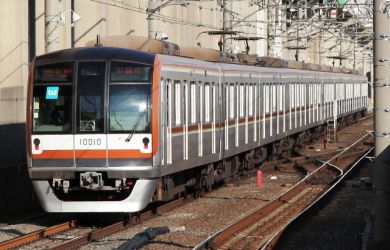
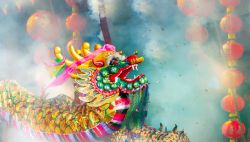
①_Panoramic-ViewDay1-Medium-390x250.jpeg)
